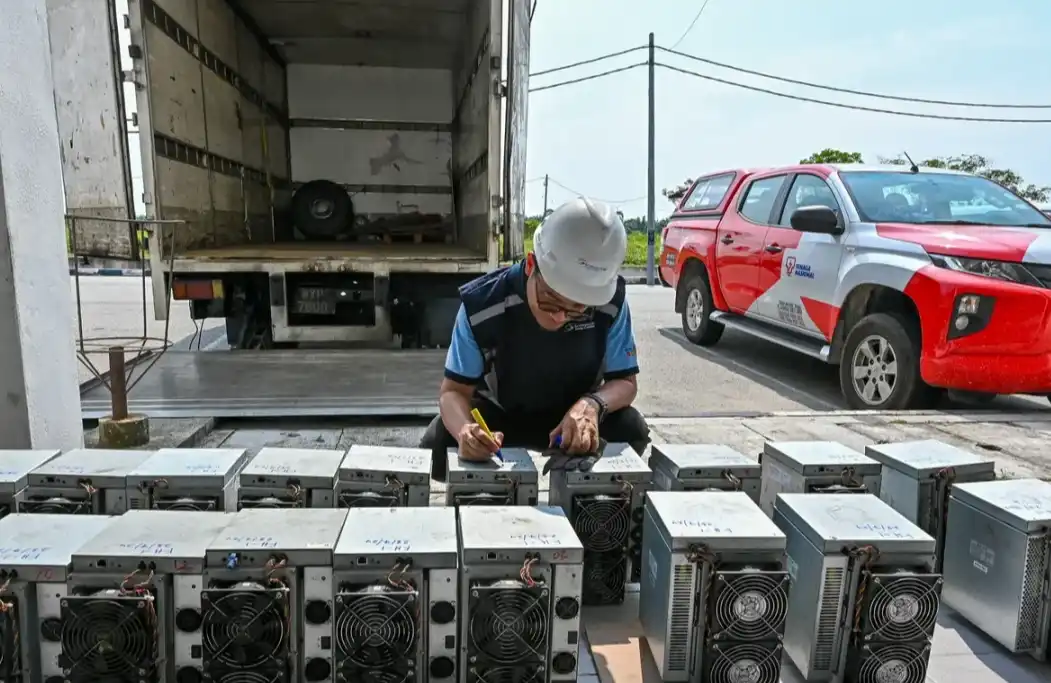meme coins are down 50% across the board, Did Binance pull an April Fools' Day prank on the market?
On April 1st, Binance had a difficult April Fools' Day, and the market fell victim to a costly prank. First, $GUN was suspected by the community of being a whale trader/market maker causing a price crash, although this has not been confirmed. Following an announcement, a more severe chain reaction crash occurred later that night. What kind of joke did Binance play on us this April Fools' Day?

Announcement Turmoil
First Announcement
The events leading to this sharp drop can be traced back to an announcement made yesterday. On March 31st at 14:30, Binance released a notice stating "Binance Futures will update 1000SATSUSDT and ACTUSDT U perpetual contract leverage and margin levels on the same day at 17:00," warning users that their current position may be affected. Due to the leverage and margin level updates, the uniform grid strategy may be impacted and terminated. Users were advised to make appropriate adjustments promptly before the changes.

Subsequent Announcement Revision
Just one day later, on April 1st at 15:32, Binance issued another announcement, stating, "Binance Futures will update the U perpetual contract leverage and margin levels of 1000SATSUSDT, ACTUSDT, PNUTUSDT, NEOUSDT, NEOUSDC, TURBOUSDT, and MEWUSDT on April 01, 2025, at 18:30." This announcement not only further modified the position limit of $ACT changed the previous day by reducing "the low leverage position limit by 50%," but also provided users with less than 3 hours to react.

Marketwide Collapse
Several tokens, including ACT, DEXE, HIPPO, BANANAS31, TST, and PNUT, experienced nearly simultaneous drops of up to 50%. Even within a five-minute window from 18:30 to 18:35, the total value of ACT futures contracts on the Binance platform plummeted by 76.53%, dropping from $94.1286 million to $22.0932 million. This sudden crash ignited the community, clearly showing that the impact of Binance's rule changes far exceeded everyone's expectations, leading to various speculations about the cause of the crash.

Liquidity Provider Suspicions
The first to come under suspicion was the liquidity provider, with WinterMute, a liquidity provider for the heavily plummeted $ACT and several MemeCoins, being thrust into the spotlight. Twitter KOL 0xJames observed addresses associated with WinterMute liquidating on-chain Meme positions. In the past half-hour, Wintermute has high-frequency sold around $250,000 worth of ACT tokens through Raydium.

Liquidity Provider Responds to Clear the Air
However, some individuals, after analyzing the situation, believe otherwise. A Web3 philosopher stated, "CEX dumping and on-chain liquidation behaviors exhibit a significant time delay. If WinterMute wanted to liquidate Meme, it does not align with the principle of maximizing profits."

Subsequently, WinterMute's founder and CEO, Evgeny Gaevoy, responded to a netizen's doubts, leaving behind the statement, "It's none of our business, and we are also curious about post-analysis to understand what happened," indicating that the on-chain selling behavior was a reaction to the token price's drastic fluctuation, automatically arbitraging the AMM pool.

Meanwhile, Australian lion brother BroLeon expressed skepticism toward Gaevoy's defense, stating that 70% of $ACT chips are on exchanges, and the truth cannot be ascertained solely from the chain. He hopes Binance can conduct a thorough investigation and provide a satisfactory response. Otherwise, it will have a highly negative impact on the market.

Binance Rule Change Factor
Of course, some believe it was not the liquidity provider dumping but rather changes in Binance's rules. Initially, adjustments to the rules directly impacted market liquidity. Binance altered contract position limits and leverage multiples to reduce market risk. However, this had a significant impact on liquidity providers. The reduction in position limits forced them to reduce their holdings or even liquidate them, and the lowering of leverage forced them to reduce their leveraged positions. Liquidity providers typically hold both spot and contract positions to hedge risks. If their position exceeds new limits or if they have insufficient funds after leverage reduction, the system will forcibly liquidate in the futures market, further driving down the contract price.
As the spread between spot and contract prices continued to widen, coupled with arbitrage bots buying in the futures market at low prices and selling in the spot market when the spread narrows, they profited. The bots selling in the spot market in large quantities further depressed spot prices. As the liquidation of liquidity providers led to a drop in contract prices, combined with arbitrage bots causing spot prices to fall, the overall decline resulted in market panic. Retail investors also followed suit in selling off, leading to a chain reaction crash, ultimately causing a collapse across the Memecoin market.
Crypto KOL and former FTX community partner Benson Sun commented, "Before modifying the rules, Binance should first assess how many positions will be liquidated. If the positions of market makers are significant, they should also be notified in advance. As a leader in the industry, I hope Binance can handle this incident properly."
The Truth Remains a Mystery
After experiencing market suspicions regarding market makers, Binance rule errors, and even internal malpractice, KOL Midnight stated that none of it is related and merely stated the facts. He Yi commented with a "sigh" under this tweet, showing his helplessness.

At the time of publication, He Yi tweeted that the corresponding team is preparing detailed replies, and it is currently impossible to make a judgment on the matter. Recently, the beleaguered Binance has indeed encountered some issues that must be addressed. BlockBeats will continue to follow this matter and report on it.
Welcome to join the official BlockBeats community:
Telegram Subscription Group: https://t.me/theblockbeats
Telegram Discussion Group: https://t.me/BlockBeats_App
Official Twitter Account: https://twitter.com/BlockBeatsAsia











